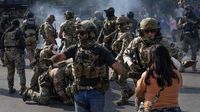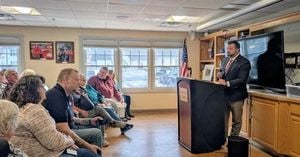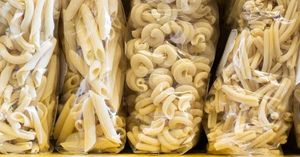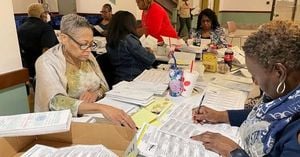On a brisk Sunday morning, the city of Chicago found itself at the crossroads of celebration and anxiety, as the 47th annual Bank of America Chicago Marathon wound its way through neighborhoods steeped in history and community spirit. For many, the event was a symbol of resilience and unity, but this year, the marathon’s usual exuberance was shadowed by a surge in federal immigration enforcement operations that left both runners and residents on edge.
At around 8:30 a.m. on October 12, 2025, the tension was palpable in Rogers Park, a diverse neighborhood on Chicago’s North Side. According to ABC7 Chicago, Border Patrol agents were seen interrogating a man right in front of St. Jerome Catholic Church as parishioners gathered for a Spanish-language mass. Julie, a local resident, said, “I think they’ve been casing the church... the mass times are down. There was somebody up there the other day who got picked up. They’re in this neighborhood for a reason.” Her concerns prompted her and her partner to alert the priest and mobilize neighbors, ensuring that parishioners could leave the church safely. “I felt really badly for them,” Julie added. “They were inside, scared to come out. I can understand why.”
This scene was not isolated. Across Chicago, the presence of Immigration and Customs Enforcement (ICE) agents as part of President Donald Trump’s “Operation Midway Blitz” intensified fears among immigrant communities. In the Pilsen neighborhood, a historically Mexican American enclave, the marathon route became a poignant stage for both celebration and concern. Natalia Diaz, a freshman at Carthage College, paused her first Chicago Marathon to embrace her grandmother, Consuelo Herrera, on 18th Street. The moment was bittersweet, as family members reflected on the changing atmosphere in their community. “Residents of the city and nation are living in a crazy time we wouldn’t have thought of in 2025,” Consuelo Arguilles, Diaz’s aunt, told the Chicago Tribune.
Support for runners was strong, with viewers cheering along the race route. Yet, the joy was tempered by memories of a subdued Mexican Independence Day Parade the previous month, a sign of how federal enforcement had altered public gatherings. Local immigration advocates noted that the visible presence of ICE agents affected not only the marathon’s turnout but also how runners and their families prepared for the event. Krystal, a member of the coalition Pilsen Unidos por Nuestro Orgullo (PUÑO), explained, “People kind of started reaching out to me or I started reaching out also to run clubs to be like ‘I think this is really important, this is impacting, not only the communities you run in, but your actual runners as well.’ ICE is terrorizing our city and sucking the joy out of everything. They shouldn’t be here. They are causing a lot of fear and a lot of harm and that, of course, is impacting so many runners.”
To address these concerns, run clubs across Chicago stepped up. Las Doñas Run Club, originally started as a walking club for moms, and Raza Run Club, both provided safety tips and emotional support to their members. “We want people to feel safe when they run, and run with the community,” said Edgar Rivera, co-founder of Raza Run Club. “And whether they’re not training for a race, and they’re just looking for people to run with, and find that community, we’re here for them.” Aime Cabrera, a member of Las Doñas Run Club, noted that some club participants chose not to run this year because of the increased ICE presence. The clubs encouraged runners to use the buddy system and memorize emergency contacts, including the number for the Illinois Coalition for Immigrant and Refugee Rights, as reported by the Chicago Tribune.
Meanwhile, at the Broadview ICE processing facility just outside Chicago, protests continued, albeit in smaller numbers than in previous days. According to ABC7 Chicago, a fence that had been cutting off Beach Street where the ICE facility begins was still up on Sunday, but a judge ordered it removed by 11:59 p.m. on October 14. The ongoing demonstrations reflected a community unwilling to accept the status quo, even as legal battles played out in the courts.
Illinois Governor JB Pritzker did not mince words when discussing the Trump administration’s immigration crackdown and the legal wrangling over National Guard deployments. Speaking on ABC’s ‘This Week,’ Pritzker said, “Look, we’ve gotta rely on the courts to do the right thing. I realize that sometimes that’s risky business, especially when some have been appointed by Donald Trump. But we’ve seen that even a Trump-appointed judge out in California has ruled against the administration.” The Governor’s comments underscored the uncertainty many feel as federal and state authorities spar over the limits of enforcement and the rights of residents.
Vice President JD Vance, appearing on the same program, pushed back, stating, “We’re trying to help him and we’re trying to help the residents of his biggest city. I wish that he would let us, because he certainly isn’t doing the job himself.” The exchange highlighted the deep political divisions over immigration policy, with state and federal officials trading barbs even as communities sought reassurance and stability.
Religious leaders also weighed in, urging compassion and a focus on human dignity. Cardinal Blase Cupich of the Archdiocese of Chicago told CNN, “Yes, we surely have the need for a state to provide safety for people and also secure its borders, but let’s not forget that human dignity also has to be preserved. Many of these people who don’t have documents have been here for a long time and contributing to society.” His words resonated with parishioners like Jorge Quiroz, who said, “Right now, nobody wants to come out, because they don’t want to be deported.”
The impact of increased immigration enforcement rippled through Chicago’s neighborhoods in ways both visible and subtle. For some, it meant skipping cherished community events or missing the chance to cheer on loved ones at the marathon. For others, it meant living with a heightened sense of vigilance, always looking over their shoulder. Yet, amid the fear and uncertainty, acts of solidarity—neighbors protecting parishioners, run clubs supporting their members, families gathering to celebrate heritage—offered a reminder of the city’s enduring spirit.
As the sun set on October 12, 2025, Chicago stood as a city both challenged and united, determined to safeguard its traditions and its people even in the face of daunting odds.






